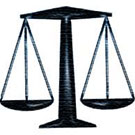A Brand New Day

Today is the Vernal (Spring) Equinox. So, I decided to do some internet research about what this means…and share it with all of you.
The Spring Equinox occurs once a year and marks the beginning of the spring season. It usually falls somewhere between March 21-23rd (I guess it came a day earlier this year). On this day the tilt of the Earth is exactly perpendicular to the sun, meaning that the sun will cross directly over Earth’s equator. Usually the length of daylight will vary in the northern and southern hemispheres, but today there will be exactly 12 hours of day and 12 hours of night all over the world; light and dark will be in balance. The only other time this happens is in late September during the Autumnal Equinox.
Clearly this day has vast symbolic and spiritual importance. I have found that cultures and civilizations throughout history have celebrated this day as a new beginning and a renewal.
In Astrology, it is the beginning of a new cycle. The zodiac calendar will start over with Aries (the Ram).
For Persians, today is called Nawruz, the beginning of the new year. This celebration is founded in the 3,000-year-old tradition of Zoroastrianism.
Similar traditions are found all over the world, and throughout history—in China, Europe, and Africa.
In all celebrations, a few things seem to remain constant. A prominent symbol for the equinox is the egg, representing new life. Egg-decorating and/or coloring traditions are ever-present in European and Persian traditions. American children still partake in this age-old spring-time activity. In addition, it is supposedly possible to balance an egg on its top today although many say it’s just a myth. Nevertheless, the prospect almost always attracts the attention of a few news stations.
Because spring is usually the time that animals reproduce, milk is a traditional staple at equinox celebrations. This is also the time that the food supply is renewed. Thus, feasting is an important aspect of all traditions. Foods such as butter, sugar (think Peeps), fruit, and grains were often consumed at this time.
Colors usually include red for sacrifice, green for growth, and purple and yellow. Does the latter sound familiar?
One of the most well-known celebrations of the equinox is Easter. The name “Easter” actually comes from the pagan lunar goddess, “Eostre.” She is represented with the bunny, signifying fertility and the egg, representing creation. Some believe that she actually had an enchanted rabbit that could lay eggs and that’s where we get a lot of our Easter traditions today.
The Eostre celebration took place on the first full-moon after the equinox. Because the Catholic Church wanted to break ties with pagan ritual, Easter was moved to the first Sunday after the full moon. The Church was so intent on differentiating the holiday that if Easter were to ever fall on the full moon, regulations say it shall be moved to the following Sunday.
Even ancient civilizations took note of this day, evidenced by some of the most famous ruins we have today. It is hardly a coincidence that the Egyptians built the Great Sphinx to face the sunrise on the Vernal Equinox—and that was nearly 4,500 years ago. Similarly, Stonehenge, built over 3,000 years ago, marks the sun’s exact placement on the equinox. Several of these ruins give special tours on the equinox. Mexico’s Chichen-Itza attracts a large gathering to watch the natural “light show” that occurs on the equinox. This phenomenon dates to 1500 B.C.E. and is the result of some pretty impressive Mayan engineering.

Aside from all the history, today is a day to start over, begin a new project you have been thinking about, or change the direction of your life. After several months of cold weather (sorry, California doesn’t really apply), this is the time to take action on all the things you’ve been stalling on. Clean out your closet, buy something new, or just enjoy a refreshing dinner. I feel that sometimes it is necessary to just let the past go and to begin again.
Well, history tells us that day is today!
Laura Woods
Where I got my info:
http://en.wikipedia.org/wiki/Equinox
http://www.infoplease.com/spot/riteofspring1.html
http://www.schooloftheseasons.com/spring.html
http://ezinearticles.com/?Vernal-Equinox-History-and-Traditions&id=156525
http://www.helium.com/items/1367467-vernal-equinox-traditions


0 Comments:
Post a Comment
Subscribe to Post Comments [Atom]
<< Home